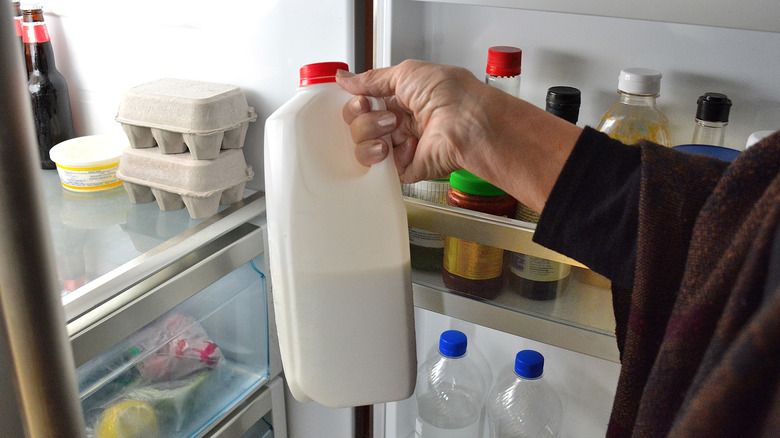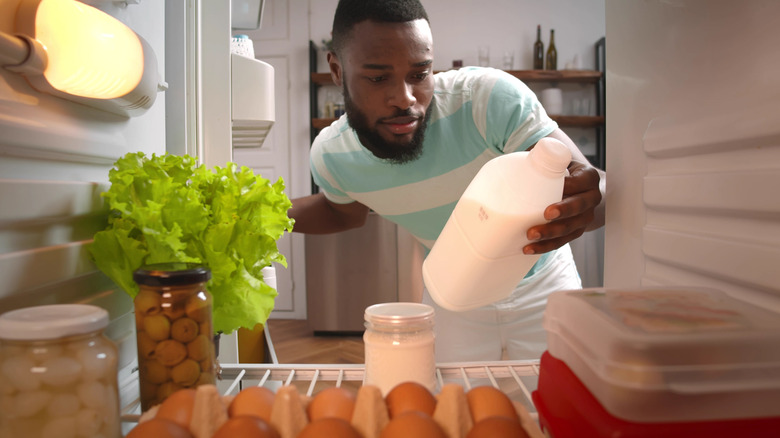The Best Place To Store Milk In The Fridge Isn't Near The Door
Have you ever compared your refrigerator to someone else's? The contents are likely different, but one thing is probably the same: where you store certain foods. Of course, we all know that butter reigns supreme with its own closed-in compartment on the refrigerator door (it's even become a meme). Most refrigerators also have a specific place to store eggs and a crisper drawer that provides more humidity than the other storage areas, making it an ideal place for fresh vegetables and herbs.
Over time, the refrigerator door has become a familiar location for people to store their milk — mostly because it's the perfect width to hold a standard milk carton. Unfortunately, though it might seem like the unofficial home for your milk, the door is not the best place to keep it — and you're likely costing yourself more money by doing so. This is because the refrigerator door is often the warmest location in the appliance, especially if you live in a home where somebody is always running to the kitchen for a tasty snack from the fridge. As such, you'll likely want to store your milk as far back from the door as possible.
Store your milk in the back of the refrigerator
Before you put that newly-bought milk on the refrigerator door, think again. The FDA says your refrigerator should always have a temperature no higher than 40 degrees Fahrenheit. Of course, keep it above 32 degrees, since anything below that will freeze. That said, you don't want the appliance's interior to reach above 40 degrees because this would lead to dangerous bacteria growth that could quickly spoil your food.
When you put milk near the door, it's exposed to the highest temperatures in your refrigerator. When you open the door, that area is blasted by warm air from your home. As a result, your milk can spoil much quicker than if it were stored in the coldest spot: the back of the fridge. Even more specifically, the back of the bottom shelf. This tends to be the part of the refrigerator that withstands temperature fluctuations the best, so it's a great place to store your most perishable items. The quicker your milk spoils, the more of it goes to waste (and the more frequently you need to purchase it), which means it could cost you more money if you aren't storing milk in an ideal location.
Here's what you should keep near the refrigerator door
Thankfully, your butter is safe in its little butter house. Since butter has such a high fat percentage, it doesn't spoil easily and can be subject to a little temperature fluctuation. According to Consumer Reports, there is also no need to move the ketchup and mustard, either, as they can withstand temperatures that are a few degrees warmer, as can most of your other condiments. Plus, any juice, soda, and water you might have already opened are welcome to stay near the door as well.
Regarding what you shouldn't store there, milk and eggs are the two most important products to relocate. Eggs spoil pretty quickly, so they should be sent to the back lower shelf near the milk. Anything else that is highly perishable, such as meat and fish, should also be kept as far away from the refrigerator door as possible.


